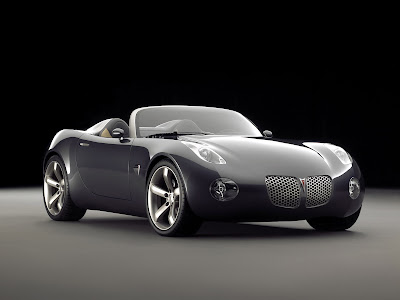It is the Bentley that was never meant to be, done the way Bentleys were always meant to be.
We're flat-out on Germany's Sachsenring race track in the new Mercedes SLS AMG, chassis number 00045, a mildly camouflaged pre-production model. Ahead is an SL65 AMG Black Series--twin-turbo V-12, 670 hp, 738 lb-ft of torque--driven by Tobias Moers, head of AMG's r&d division, seasoned race instructor and today's pace-setter. Filling his mirrors, our red gullwing keeps pushing harder and harder, even though its normally aspirated 6.2-liter V-8 is rated at a comparably modest 571 hp and 479 lb-ft. The Sachsenring has plenty of slow corners, lots of climbs and descents, two long straights and two very fast and very blind fourth-gear bends.
As our session progresses, this track is becoming a nightmare for the wide, fat SL, and dreamland for the light and nimble SLS. Despite the Black Series car's four more cylinders, 100 extra hp and 259 lb-ft of added torque, it's punished by its 551-lb weight penalty. The SLS not only uses a significantly lighter double-wishbone aluminium suspension, it also boasts a featherweight spaceframe body which tips the scales at a mere 531 lbs. Perhaps even more significant is the weight distribution. In contrast to the nose-heavy SL, the new gullwing places only 48 percent of its mass on the front axle and 52 percent on the driven wheels.
In this match, the Black Series SL doesn't stand a chance. It understeers early, and after only ten laps it has practically run out of front tires. The momentum gained on the straights can never compensate the speed lost on the approach to and through the infield.
The SLS is a totally different animal. It is 49 inches low and 76 inches wide, with cab-backward proportions that emphasize the front-mid-engine layout. The boxy light-alloy skin is draped over a long, 105-inch wheelbase. The gullwing doors open at a large 70-degree angle, but even when fully deployed, the maximum clearance is a scalp-threatening 5 feet, so that short people can still reach the inner grab handles from their seats. The power-operated buckets, which feature lightweight magnesium backrests, are comfortable and supportive.
The 2007 Chevrolet Volt concept dazzled, even more than General Motors expected. For 2010 production, however, it has to use existing component sets, which naturally make the Volt more mainstream and cheaper to build. The changes also give the car lower drag, more cabin space, and a tighter turning circle. The designer of both vehicles, Bob Boniface, says that concept cars are "not a contract with the general public" and that the commercial product is a much better car. We tend to agree with him. Polarizing design can impress but lose sales. GM needs this car to succeed. So do we all.
From Concept to Production
1 The deeply inset grille and the sharp crease from the lower lamps were terrible for aerodynamics, and the recessed lamps were neither adequate for illumination nor legal.
2 Multiple hard surface-change lines on the front of the concept tended to confuse and retard oncoming air molecules. Smoothing the front end helps aerodynamically and simplifies production.
3 Saab 99-like, the tank-slit wraparound windshield was deemed likely to compete with plans for future Saab products. But GM may sell Saab anyway.
4 The sharp break from windshield to roof was likewise considered too Saab-like, and it was also aerodynamically undesirable, thus the change to uninterrupted flowing glass.
5 Big bulges for oversize - 21-inch - wheels were another drag-increasing styling element that had to go for the production car.
6 The grille shape was retained, but air flows into the engine compartment only through peripheral slots around the grille shield, which retains its diamond texture. Most air enters below the bumper.
7 Headlamps had to be bigger for adequate lighting, and wrapping them around the front end let side markers be incorporated.
8 The impossible-to-clean transparent fairings from the show car have been replaced by painted sheetmetal, which visually extends the height of the side glass.
9 These 17-inch wheels look much like the show car's 21-inch units, but in fact, they have been refined to reduce aerodynamic drag. Small details count when there's not much power available.
10 The continuous sweep of glass from windshield to roof is excellent for aerodynamic drag reduction, but it also gives the car a softer, safer appearance, desirable for a family car.
Ironically, it's only years after the big divorce that the Jeep brand finally benefits from the DaimlerChrysler marriage. An all-new Jeep Grand Cherokee debuts for 2011, and it now shares its underpinnings with the Mercedes-Benz M-class SUV. Better late than never, we suppose.
A new 3.6-liter replaces the previous 3.7-liter as the base V-6. It produces 280 hp and 260 lb-ft of torque (up significantly from the old lump's 210 and 235) and returns 11 percent better fuel economy, thanks in part to variable valve timing. The optional 360-hp, 5.7-liter Hemi V-8 returns to the playground, and both engines are paired with a five-speed automatic transmission and either rear- or four-wheel drive.
An optional Quadra-Lift air suspension (inherited from Mercedes) can raise the Grand Cherokee's ride height, increasing approach, departure, and breakover angles for even more off-road credibility. No longer constrained by the Commander, Jeep's mainstay family hauler has room to grow--and so the new Grand Cherokee is 1.8 inches longer, 3 inches wider, and, most important, rides on a wheelbase that's 5.3 inches longer. That last measurement contributes to a significant increase in rear-seat room, a welcome improvement over today's cramped bench. Jeep promises more soft-touch plastics and a higher quality interior, as well as an available Alpine sound system.





.jpg)


.jpg)




